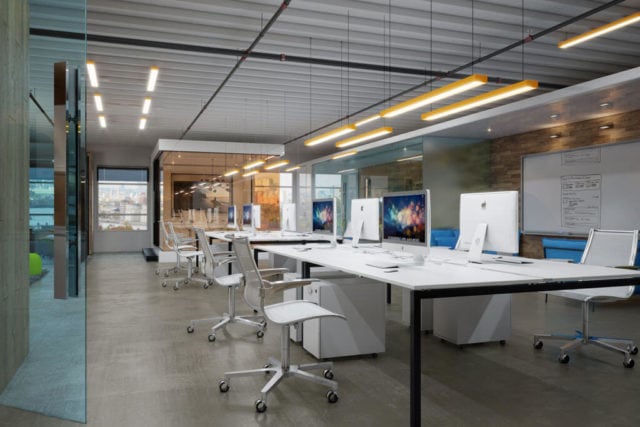The idea
Open planned offices came to life in the 1950s with good intentions to improve workplaces. The concept was originally conceived by a German design group, Quickborner, where they had developed an office landscape by placing furniture in an organic structure to create work groups. Over the decades open plan offices have been adopted by companies all over the world in attempt to improve communication, increase collaboration and cut back on the overhead costs of workspace. Not only did companies save on costs of materials when building, less walls and doors also meant lower utility bills and improved airflow from the air-conditioning.
In theory, it allowed for co-workers to collaborate and communicate a lot easier without having to leave their desks and on paper this all seemed like a good idea, and although there may be many advantages to adopting an open planned office, there are also many disadvantages.
The disadvantages of open office plans
The idea of having an open space office to increase productivity and creativity was that it actually did the complete opposite. Ironically it caused a decrease, a study in 2014 surveyed 10 000 workers across 14 different countries about open office environments and discovered:
- Office workers losing 86 minutes per day due to constant interruptions and distractions
- Too many employees are chronically disengaged at work
- Unmotivated, unproductive and overly stressed
Approximately 95% of the employees surveyed desired more privacy at work as their productivity levels decreased. Vice President of Steelcase of UK and Ireland Bostjan Ljubic said,
“The drive for collaborative working spaces was founded on getting people working better together. It has been enormously successful and has delivered efficiency on a major scale but too much interaction and not enough privacy has reached crisis proportions, taking a heavy toll on workers’ creativity, productivity, engagement and wellbeing.”
Another major issue that posed a threat was absenteeism – health and wellbeing, not only were employees constantly distracted and interrupted; they were also getting sick more often. As you can imagine, all it takes is for one person to have the flu and it is going to spread throughout the office like wildfire. A study showed that workers in an office of 3-6 people had 36 per cent more days off due to sickness and that an office of 6 workers or more had an average of 62 per cent more days off or more.
There needs to be balance if you’re considering an open office environment
In order for an open office to thrive, companies need to realise that there needs to be balance in the work environment. Although, some jobs may require collaboration and feed off the creativity from an open office area, they may also need a bit of privacy and quiet time. Companies need to experiment with quiet rooms, closed spaces and even coming up with plans to better manage staff and the noise levels if they are to escape the trap. What changes have you made to incorporate a more productive open plan office?






